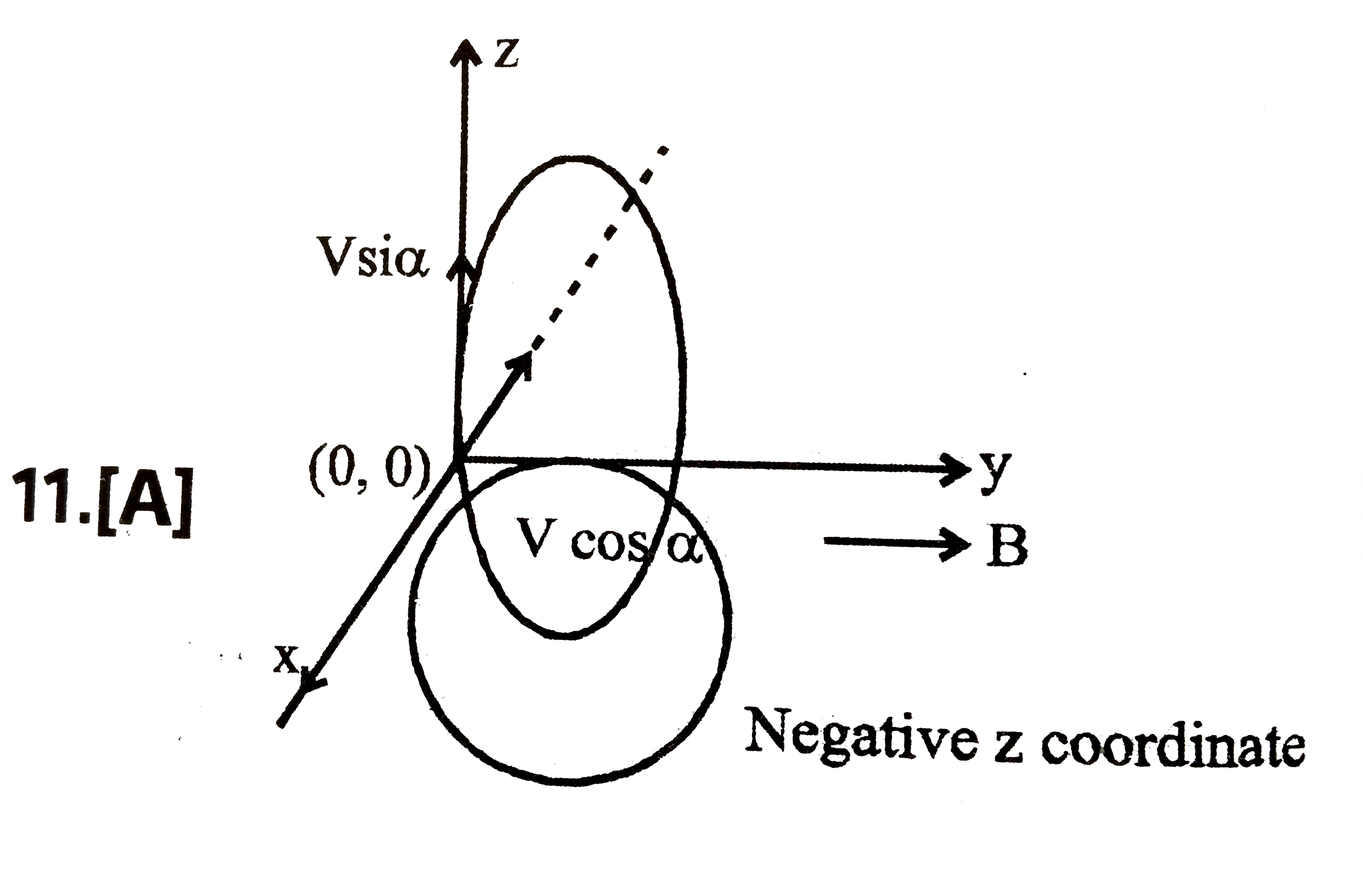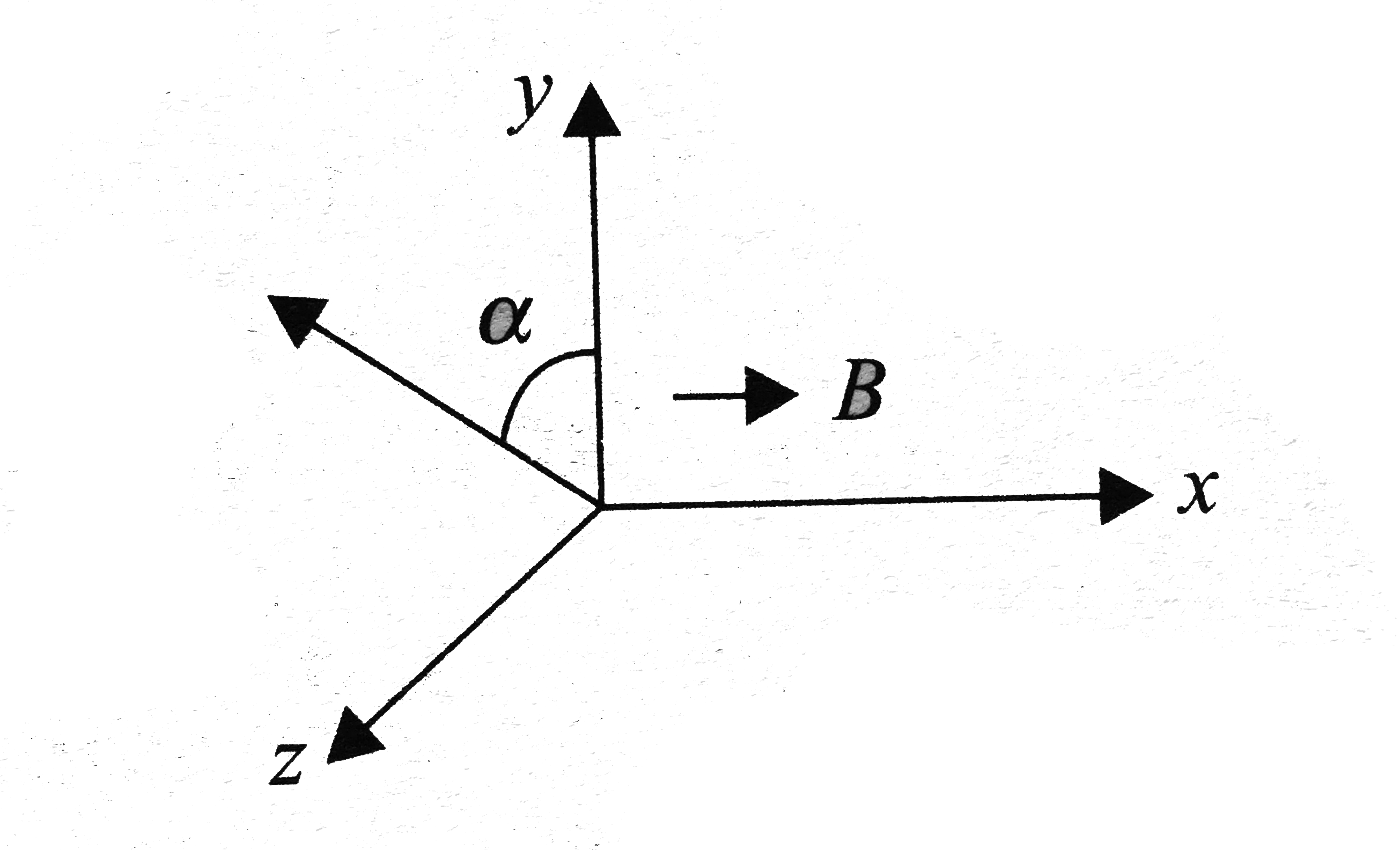In a region of space, a uniform magnetic field B exists in the y-direction A proton is fired from the origin, with its initial velocity v making a small angle alpha with the y-direction in the yz plane. In the subsequent motion of the proton
 .
.
its x-coordinate can never be positive .
itsx-and z-coo rdinates cannot both be zero at the same time
its z-coordinate can never be negative
its y-coordinate will be proportional the the square of its time of flight .
The correct Answer is:A
 .
.
Similar Questions
Discuss the motion of a charged particle when subjected to a uniform magnetic field, when the direction of motion of the particle makes an angle ϕ with the direction of magnetic field.
View SolutionA homogenous electric field E and a uniform magnetic field →B are pointing in the same direction. A proton is projected with its velocity parallel to →E. It will
View Solution
Knowledge Check
In a region of space, a uniform magnetic field B exists in the x-direction. An electron is fired from the origin with its initial velocity u making an angle α with the y direction in the y-z plane. In the subsequent motion of the electron,
 Ay-coordinate of the electron will never be negativeBz-coordinate of the electron will never be negativeCx-coordinate of the electron will never be negativeDtrajectory of the electron would be helical
Ay-coordinate of the electron will never be negativeBz-coordinate of the electron will never be negativeCx-coordinate of the electron will never be negativeDtrajectory of the electron would be helicalA portion is fired from origin with velocity →v=v0ˆj+v0ˆk in a uniform magnetic field →B=B0ˆj. In the subsequent motion of the proton
Aits z co-ordinate can never be negativeBits x co-ordinate can never be positiveCits x and z co-oridinate cannot be zero at the same timeDits y co-ordinate will be proportional to its time of flightA region has a uniform magnetic field in it. A proton enters into the region with velocity making an angle of 45° with the direction of the magnetic field. In this region the proton will move on a path having the shape of a
Astraight line.BcircleCspiral.Dhelix.
A proton is fired from origin with velocity →v=v0ˆj+v0ˆk in a uniform magnetic field →B=B0ˆj.
View SolutionA uniform electric field and a uniform magnetic field exist in a region in the same direction. An electron is projected with a velocity pointed I the same direction. Then the electron will:
View SolutionIn a certain region of space a uniform and constant electric field and a magnetic field parallel to each other are present. A proton is fired from a point A in the field with speed v=4×104m/s at an angle of α with the field direction. The proton reaches a point B in the field where its velocity makes an angle β with the field direction. If sinαsinβ=√3. Find the electric potential difference between the points A and B. Take mp(mass of proton) =1.6×10−27kg and c(magnitude of electronic charge)=1.6×1019C.
View SolutionIn a certain region of space a uniform and constant electric field and a magnetic field parallel to each other are present. A proton is fired from a point A in the field with speed V=4×104m/s at an angle of α with the field direction. The proton reaches a point B in the field where its velocity makes an angle β with the field direction. If sinαsinβ=√3. Find the electric potential difference between the points A and B. Take mp (mass of proton) =1.6×10−27kg and e (magnitude of electronic charge) =1.6×10−19C.
View SolutionIn a certain region uniform electric field E and magnetic field B are present in mutually opposite directions. At the instant t=0, a particle of mass m carrying a charge q is given velocity v0 at angle θ, with the y− axis, in the yz plane. The time after which the speed of the particle would be minimum is equal to

View Solution
